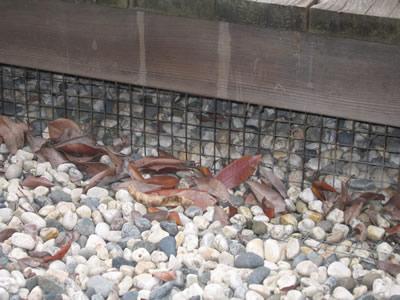
Attached Decks
Decks include all types of horizontal walkways, including landings, porches, and patios that are directly connected or very close to a house or building. Decks are described by the surface that you walk on (called the deck covering). There are two basic kinds of decks – those that use deck boards as the deck covering, and those that have a solid surface deck covering. The deck boards are almost always made from combustible materials (wood or one of the wood-fiber plastic composite or 100% plastic deck board products). Solid surface deck coverings are usually made from noncombustible materials, and include light-weight concrete, stone or tile. Solid surface decks are often built over an occupied (living) space. Occasionally an open frame deck will be installed over a water-proof membrane, again built over an occupied space. As with normal decks that use combustible boards, this open-frame deck will also be vulnerable to accumulation of debris, and ignition by embers.
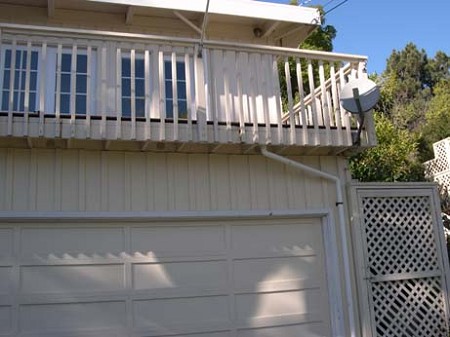
The figure above shows wood deck, built on wood 2x6 sleepers on a solid surface deck above a garage.
Decks are an important consideration because their proximity to homes and buildings. They are a source of fuel and if ignited, will provide a radiant heat and likely a direct flame contact exposure to siding and windows and doors, including glass sliders. The heat from the fire can cause the glass to break and permit the fire to enter the house.
For wood deck boards, the thicker, the better. Use nominal 2-inch thick lumber (actual thickness is about 1.5 inches).
Deck board gaps (which are there for drainage and ventilation) can permit embers to lodge and potentially cause ignitions. The accumulation of wind-blown debris in these gaps makes ignition from embers easier; therefore you should clean between-board gaps. Debris should also be removed from the areas where the deck connects to the wall. In this ground-level deck you can see many char marks caused by embers. The fire on this deck did not sustain combustion.
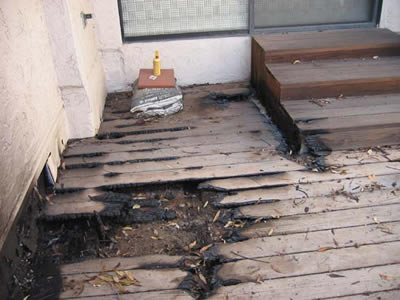
Elevated decks are even more vulnerable if you use the space underneath to store combustible materials.
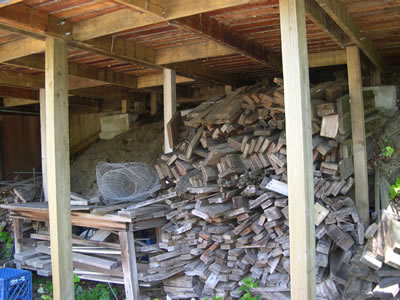
Looking at the last two photos, consider the consequences of the next deck that ignited from below, permitting fire entry through the windows (even though the siding was noncombustible).
Raised decks are open to flames or embers, especially those on slopes.
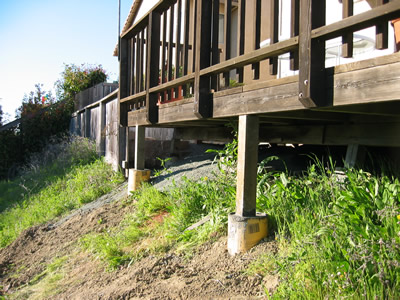
The deck above illustrates another problem — the growth of vegetation under the deck that can be a fire hazard.
Fascia boards are often used as decorative edges on decks. As is the case with unprotected wood-to-wood joints, this detail can result in the development of fungal decay. Decayed wood is more easily ignited. This deck corner ignited in a decayed area at the deck corner.
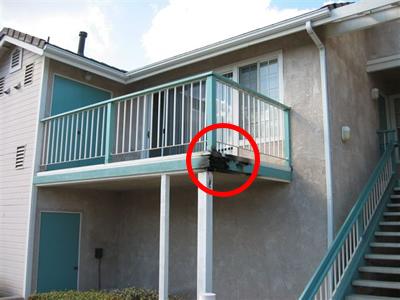
The state of California requires combustible deck boards used in new construction to meet minimum performance requirements. You can choose to use these products on your deck. A list of combustible decking that complies with the new California requirements can be found in the WUI Product Handbook, published on-line by the Office of the State Fire Marshal:
Go to http://www.fire.ca.gov/fire_prevention/fire_prevention_wildland.php and click on NEW PRODUCTS HANDBOOK.
Decks that are just above ground level can be screened to prevent the accumulation of combustible debris in the under-deck area. Note the use of the noncombustible (stone) mulch. This minimizes the growth of vegetation, and is a better choice than combustible mulch.
